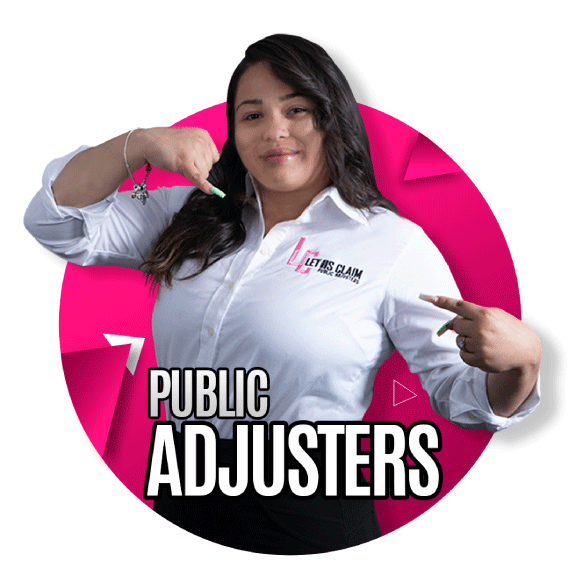Every year, parts of the Gulf Coast, Caribbean, and Atlantic Coast prepare for what they call “hurricane season.”
A hurricane is a type of storm that is also known as a tropical cyclone. It’s a rotating low-pressure weather system that forms over warm tropical or subtropical waters (like the Caribbean). To be a hurricane, the wind in the cyclone must reach at least 74 miles-per-hour.
What causes hurricanes, and how do they become so powerful? Keep reading to learn how a hurricane forms.
![]()
How a Hurricane Forms: Evaporation and Condensation
Why does only part of the world experience tropical cyclones (and hurricanes)? It’s because these storms need warm water (at least 80 degrees Fahrenheit for 165 feet below the surface) to form.
However, these storms need more than tropical waters: they also need the right conditions.
A tropical cyclone occurs when the warm air over the sea rises and gets replaced by cooler air. Thanks to the equatorial latitude, the cold air then warms and also rises. As the warm air rises, the area below becomes a low-pressure zone. Then, the air from higher pressure areas pushes in, which causes the air to rise again.
To form a hurricane, the rising air needs to meet winds. When the westward winds blow from Africa across the Atlantic, it causes the water to turn into water vapor and rise. When the water vapor rises, it cools again and turns back into water droplets.
The cycle of evaporation and condensation (formation of water droplets) in the rising air causes cumulonimbus clouds to form. They then begin to rotate thanks to the rotation of the earth.
When there’s enough warm water, the clouds grow and grow through more cycles. Once the clouds rotate at more than 74 miles per hour, they become a hurricane.
The Four Stages of a Tropical Cyclone
Before reaching hurricane state, the tropical cyclone goes through three earlier stages. Indeed, a tropical cyclone can still cause damage even if it doesn’t achieve hurricane status.
The first stage is a tropical disturbance. It occurs when the clouds form according to the evaporation and condensation pattern described above and when the wind begins circulating.
Rotating weather systems with surface winds of under 39 miles per hour are tropical depressions. Once the speeds reach 39 miles per hour (up to 74 mph), the system is a tropical storm.
What Makes Hurricanes so Powerful?
Hurricanes are at their most powerful when they’re out at sea because they feed on the cycle of warm water evaporation and condensation. Once they hit land, they lose their power source, which causes them to weaken, but not before wreaking havoc.
Once a storm becomes a hurricane, it falls into one of five categories:
- Category 1 – 74-95 mph winds
- Category 2 – 96-110 mph winds
- Category 3 – 111-129 mph winds
- Category 4 – 130-156 mph winds
- Category 5 – 157+ mph hour winds
The strongest Atlantic hurricane ever on record is Hurricane Wilma (2005). Wind speeds were recorded at 185 miles per hour and caused $34.4 billion in damage.
As a reminder, wind speeds are not the only factor involved in the damage a storm causes. Flooding is also an issue, which is why Hurrican Katrina, which also landed in 2005, had max wind speeds of 175 miles per hour but caused $161.6 billion in damage
Tropical cyclones (same storm but not called hurricanes) are often much stronger when they originate in the Pacific. The size of the Pacific Ocean gives the system more time to gather speed before it meets land, which means these storms have the potential to be much stronger and larger.
In the Pacific, the storm with the highest winds is Patricia (2015), with wind speeds of up to 215 miles per hour.
Why Global Warming Plays a Role in Hurricane Strength
Scientists say it’s challenging to link single storms to other trends like global warming. However, it is possible to link storm patterns, and the patterns are troubling.
For example, when Hurricane Dorian hit the Bahamas in 2019, it arrived with 185 mile per hour winds and a powerful storm surge that devastated the islands. But Dorian wasn’t always a superstorm: the Friday before it landed, it was a Category 3. On Sunday, the “storm-fueling waters” of the Caribbean raised it to a Category 5 storm. Then, when it lost the winds needed to move it on, it stalled over the Bahamas, battering some parts of the archipelago into oblivion.
Why the link with climate change?
The National Climate Assessment has suggested for years that we could see a higher number of more intense storms over time – hitting the coasts one after another. Moreover, warmer conditions could make hurricanes move slower and dump more rain (thanks to the increased cycle). Other studies say a warmer atmosphere could also slow down the winds that push a storm forward, as happened with Hurrican Dorian.
The slower winds don’t make for slower wind speeds. They stop the storm from reaching land faster, thereby cutting off its supply of warm water, which weakens it.
Are Category 6 Hurricanes on Their Way?
At present, there are five categories of hurricanes. But the intensity of the storms (and the number of them) has some considering whether a Category 6 is necessary. A new category would better communicate the severity and power of today’s superstorms. But Robert Simpson, who created the Saffir-Simpson scale currently used, said that once wind speeds are more than 156 miles per hour, it tears buildings apart – and that’s the most important thing to communicate (in their opinion).
Scientists first started discussing it after the intense 2005 Atlantic hurricane season. But chatter notably picked up when Hurricane Dorian landed and became what some believe as the threshold for Category 6 storms.
A new category is possible, but at present, it doesn’t exist. Call them what you want, but a lack of a new name doesn’t negate the damage done by these new storms.
Do You Have Adequate Hurricane Protection?
If you live on the Atlantic or Gulf coasts of the United States, you need excellent insurance to help protect you when hurricanes make landfall.
The combination of warmer waters and warmer air temps impact how a hurricane forms. They create more and more severe storms.
Are you worried about what your insurance offers? Are you still dealing with hurricane damage from last year? We specialize in hurricane damage of all kinds. Get in touch for a free consultation with our insurance consultants.






0 Comments